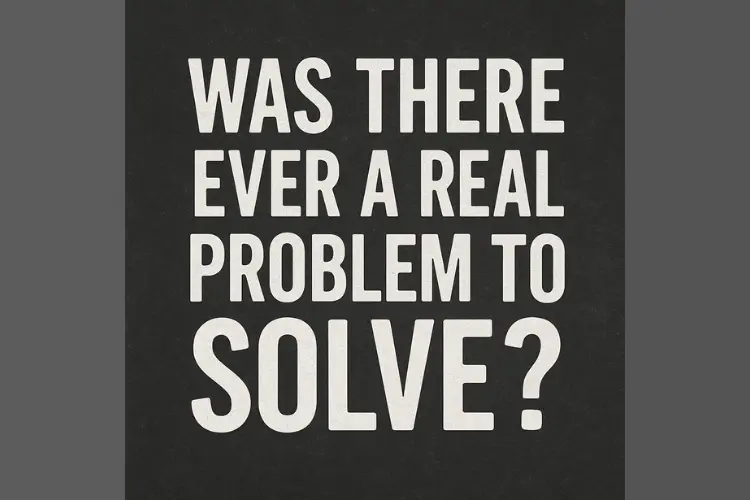Introduction
In 2021, Mark Zuckerberg stood before the world and declared a bold new future. Facebook would become Meta, a company focused on building the metaverse — a virtual world where people could live, work, and play. It was meant to be the next evolution of the internet. But now, in 2025, that vision is a digital ghost town.
Billions of dollars later, the metaverse is mostly empty. The hype has faded. The users never came. And Meta is left nursing massive financial losses. This is the story of how one of the most ambitious tech pivots in history became one of its biggest cautionary tales.
1. The Birth of the Metaverse Dream
Zuckerberg’s 2021 announcement was more than a rebrand. It was a signal that Meta was all-in on virtual reality. The company believed the metaverse would replace mobile as the next dominant platform.
Meta spent $2 billion to acquire Oculus in 2014. That was just the beginning. By 2021, Meta was pouring tens of billions into its Reality Labs division to develop AR and VR technologies. The goal? To create a fully immersive digital universe.
Employees were reassigned. Priorities shifted. Meta bet its future on a world that didn’t yet exist. Investors were skeptical, but Zuckerberg remained confident. The metaverse would be as big as the internet itself.
2. Fast Forward to 2025: A Wasteland of Virtual Promises
Four years later, the metaverse looks nothing like the vision we were promised. Virtual spaces are empty. User engagement is low. Few people are using the platform to work, socialize, or play.
Despite billions invested, the metaverse failed to capture public interest. It never became part of daily life. While Quest headsets saw some sales, they never went mainstream.
Tech reviewers described the metaverse as clunky and disconnected. Most users tried it once and never returned. Developers stopped building for it. Even Meta employees became less enthusiastic.
3. The Data Doesn’t Lie: AR/VR Market Is Shrinking
Recent reports from IDC Global reveal a grim picture. Shipments of AR and VR headsets dropped by 67% year-over-year in Q1 2024. Instead of growing, the market is shrinking.
Meta’s market share in VR hardware has also collapsed. In late 2023, it held 62% of the market. By early 2024, that number had dropped to just 37%.
One key reason? Apple entered the game. The Vision Pro headset from Apple captured attention and consumer trust. Meta couldn’t compete on hardware quality or ecosystem.
The dream of a thriving VR economy vanished. Instead, the industry is contracting. The average consumer still doesn’t see the need for a $500 headset to enter an awkward virtual world.
4. The Reality Labs Money Pit
Reality Labs has become one of the costliest divisions in tech history. In Q4 2024 alone, it lost $5 billion. It generated just $1.1 billion in revenue. That’s a loss of nearly $5 for every $1 made.
Since 2019, the division has lost over $45 billion. That’s more than the combined market cap of Pinterest and Snap. And the losses are growing each year.
In 2023 alone, Reality Labs lost around $16 billion. Despite this, Meta continues to fund the division. There’s still no clear path to profitability.
Zuckerberg believes in the long-term vision. But investors are growing restless. Tech veterans say they’ve never seen this level of spending without results.
5. Was There Ever a Real Problem to Solve?
One former Reality Labs employee said it best: “With AR and VR, Meta came up with a solution when there never really was a problem.”
Consumers weren’t asking for virtual offices or avatars. Zoom worked fine. Gaming already had robust platforms. People didn’t want to wear bulky headsets to attend meetings.
The problem was artificial. Meta assumed people would adopt the metaverse once it existed. But it never asked if people needed it.
Great technology solves real problems. The metaverse, as it was built, didn’t. It was an answer to a question no one was asking.

6. The Zuckerberg Echo Chamber
Since 2021, Zuckerberg has repeated the same line: the metaverse is the future. Every year is a “pivotal” one. Every setback is just part of the journey.
But the results tell a different story. User numbers are flat. Developers have moved on. The public has stopped caring. Internally, even some executives are skeptical.
Zuckerberg’s stubborn optimism is starting to sound like denial. It’s a pattern in tech where leaders fall in love with their vision and ignore the data.
Meta could pivot. It has the talent and resources. But continuing down this path looks less like bold leadership and more like sunk-cost thinking.
Conclusion: A Cautionary Tale in Tech Ambition
The metaverse was supposed to be the next internet. Instead, it became a $45 billion reminder that vision alone isn’t enough.
Meta’s gamble on AR and VR shows what happens when companies chase hype over user needs. The losses are staggering. The market is shrinking. And the future of the metaverse is uncertain.
While Zuckerberg still calls 2025 a pivotal year, it’s hard to see the turning point. For now, the metaverse remains a virtual ghost town with no clear purpose.
At StartupHakk, we believe in bold ideas grounded in real-world problems. Let Meta’s journey be a lesson: even giants can get lost in a mirage if they forget to ask what people truly need.




